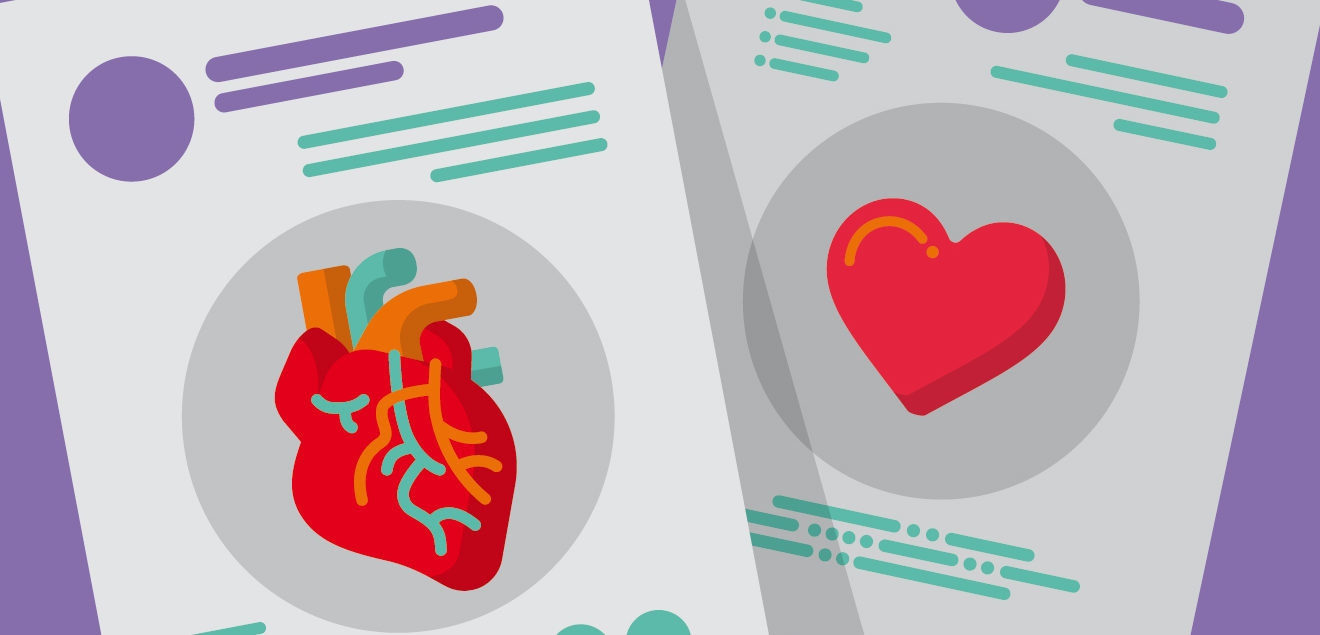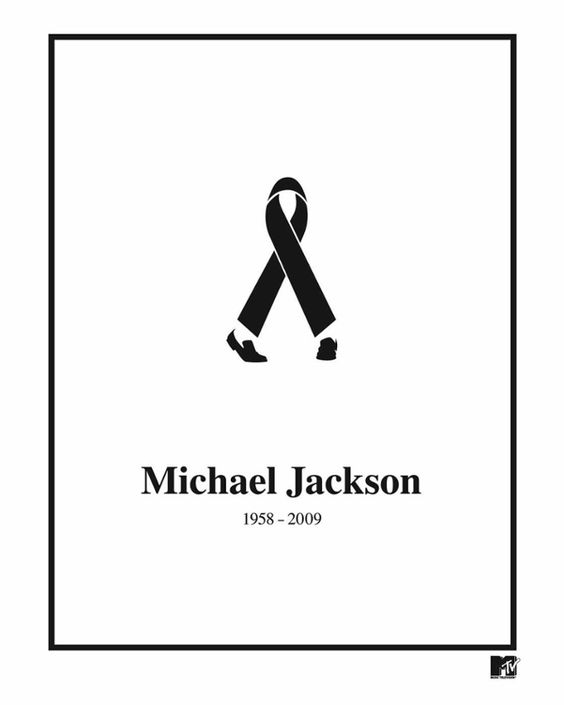Denotation and Connotation — How to Create Meaningful Images in Graphic Design?
Last Updated on: 23rd March 2024, 01:40 am
An increased number of companies and personalities are betting on spreading their brands through graphic media due to the power of the image. Designers make use of the concepts of denotation and connotation to create meaningful images in graphic design.
Nowadays, more than ever, images have reached unparalleled importance in the way we communicate, sell, buy, get information, and have fun. This fact is well known by marketing and advertising agencies. Therefore, they are looking for graphic designers who can create powerful, interesting, and direct messages by boldly and creatively applying visual communication concepts such as signs, codes, and images.
Firstly, I will explain the concept of an image. Secondly, I will continue with the difference between denotation and connotation to create meaningful images.
Table of Contents
- Image
- The Power of Image
- Image as a sign
- Meaning of images
- Denotation and Connotation
- Two sides of the same coin
- Denotation
- When do graphic designers create denotative messages?
- What are the characteristics of denotation?
- Connotation
- When do graphic designers create connotative messages?
- What are the characteristics of connotation?
- Some Insights
Image
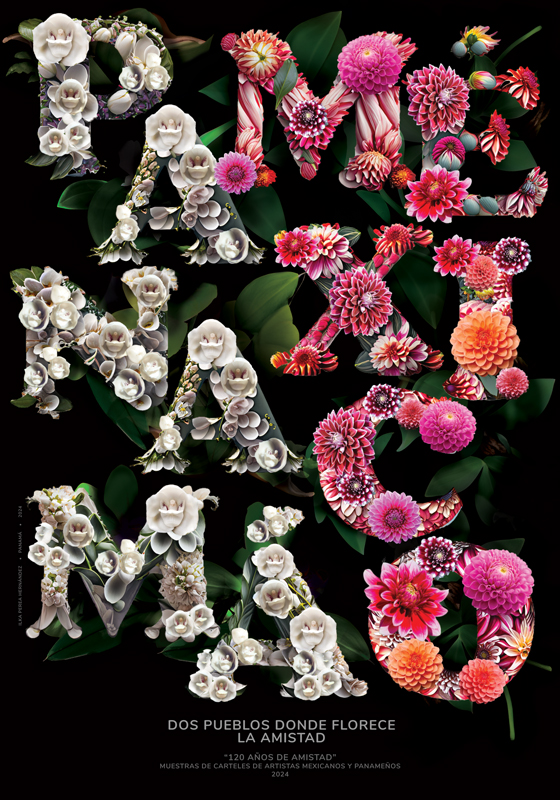
The Power of Image
No matter what the subject, we are attracted to images: from beautiful high-definition photos to carefully designed graphics. We always respond to images naturally and intuitively. The adage “A picture is worth a thousand words” confirms the communicative power of images to deliver complex messages that are more truthful than words.
Image as a sign
The sign is a unit of representation.
An image is a sign and, therefore, a unit of representation in visual language. In other words, an image is a visual representation that shows the visual appearance of a real or imaginary object.
Reality is everything that exists, whether it is a tangible object or an imaginary concept, while an image is a representation of reality. Within the structure of the sign, the image can be a stimulus. The referents are found. The designer (encoder) acts as a translator, using an image (media) to represent a real element. This image is transformed into a meaningful symbol (sign) that the user (receiver) can then interpret (decode).
Designers use images such as photographs, illustrations, logos, or stylized symbols to achieve the desired impact on their designs. They are the hook to attract the viewer. Compelling images help designers connect with their audience and make a strong impression, even before they have read a single word.
Meaning of images
There are two ways of describing, interpreting, or assigning the meaning of an image: one that takes it in an objective sense and another that takes it in a metaphorical sense. The first is known as Denotation; the second is Connotation.
Denotation and Connotation
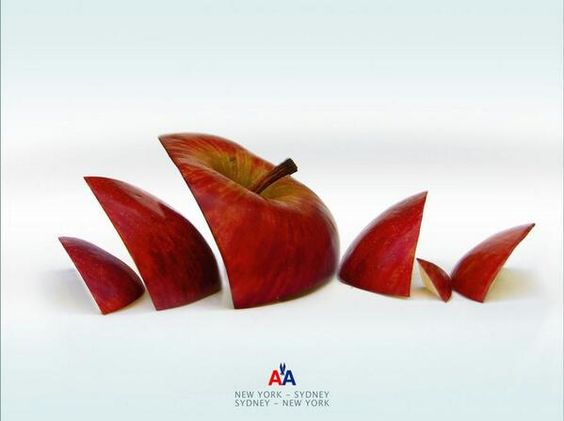
Two sides of the same coin
An image has a two-sided signified. Firstly, an objective description, or denotation, puts the key details into words without interpreting the meaning. For example, the denotation of the LEGO advertisement will be “Solid yellow background, a spoon, a fork, a white plate full of LEGO pieces in yellow, red, and green. Secondly, when someone interprets the meaning of the image, it has a connotation. Continuing with the same example, a connotation of the image could be: “Playing with LEGO feeds the imagination.”
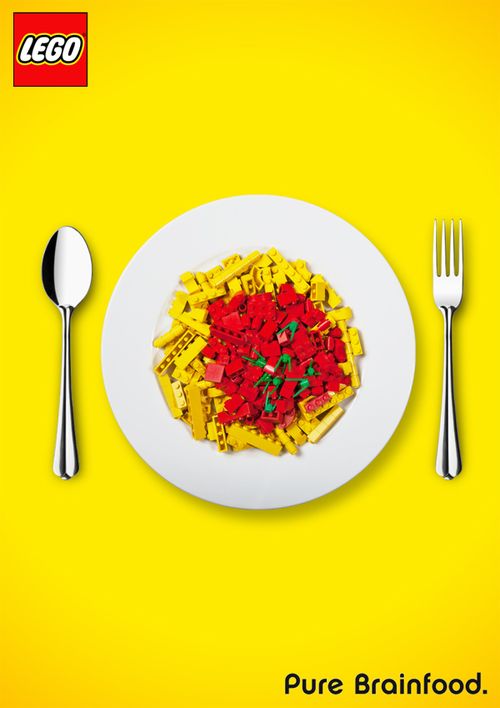
Image: LEGO advertisement “Pure Brainfood”
- Denotation:
Solid yellow background, a spoon, a fork, and a white plate full of LEGO pieces in yellow, red, and green.
- Connotation:
Playing with LEGO feeds the imagination.
You may all agree with me on the first description (the denotation) but we may not all agree on the second description (the connotation). This is because the second one is an interpretation of the meaning of an image according to the codes in our own visual language.
Denotation
Denotation is the literal description of an image, objectively, that is perfectly understandable without the need for the viewer to make any kind of interpretation. The person issuing the information must be clear about the ideas to be transmitted, launching messages with the exact elements that describe the information, without any creative use whatsoever.
When do graphic designers create denotative messages?
Images with denotative meanings are used to inform and transmit information. In other words, it can only be described in one way and does not have multiple interpretations. For instance, infographics, documentary photography, or technical schemes.
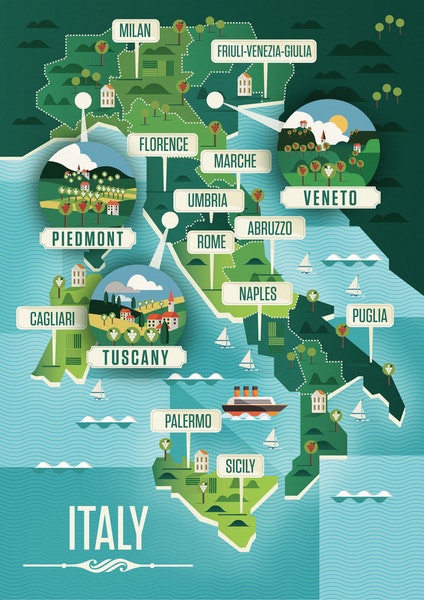
What are the characteristics of denotation?
Here is a list of the most important characteristics:
- Enlists facts in an objective manner.
- Communicates without personal influences or judgments.
- Transmission of information without an emotional point of view.
Connotation
Connotative images, on the other hand, work based on “double meaning” or metaphor. This meaning tends to change between cultural communities and geographical regions because of the cultural or social association that is superimposed on the objective meaning, giving it new nuances and new uses.
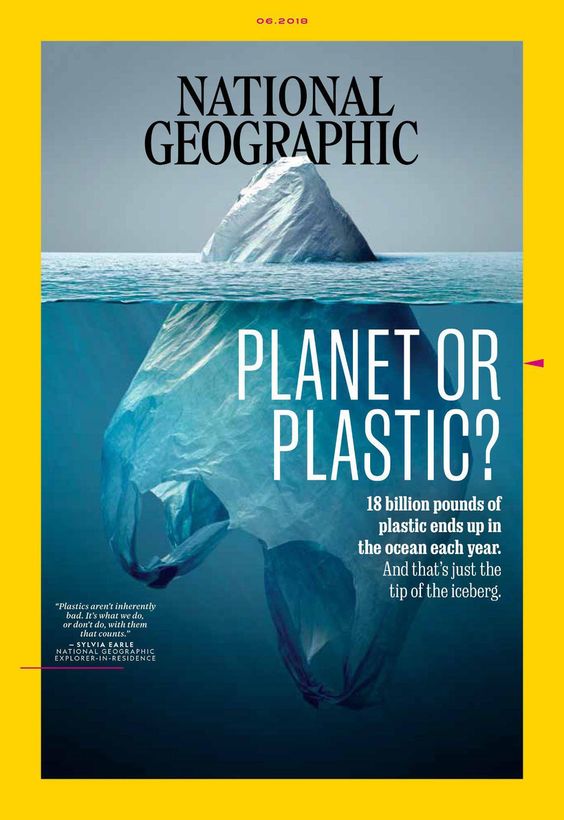
When do graphic designers create connotative messages?
Mainly the connotation of the image is suitable to include emotionality in the information shared. In other words, it is a useful way to communicate a series of sensations, feelings, and information suggestively using symbols or abstract concepts. In addition, the application of this concept to an image requires a lot of creativity on the part of the graphic designer.
What are the characteristics of connotation?
Here is a list of the most important characteristics:
- Conveys a feeling or emotion.
- Its application requires a great deal of creativity and a broad socio-cultural audience knowledge.
- It depends on the context.
Some Insights
Denotation is certainly more descriptive than connotation, which is more suggestive. In this sense, connotative messages are often more interesting and creative because they are full of meaning and appeal to the empathy and interpretation of the audience. They can be persuasive and even seductive.
In conclusion, designers require the language (visual and linguistic) of the audience as well as broad visual literacy to apply denotation and connotation to encode meaningful images.
Any Thoughts?
In the comments section, tell me if you already knew about denotative and connotative images. As a designer, which one do you find more interesting?

Share
Spread the love… and this post!
If you liked it, share this post on your social networks. Smart designers share good things with others.

Bibliography
- Chandler, D. (2017). Semiotics: The Basics. Routledge.
- Gómez-Palacio, B.; Vit, A. (2011). Graphic Design Referenced: A Visual Guide to the Language, Applications, and History of Graphic Design. Rockport Publishers.
- Leborg, C. (2006). Visual Grammar: A Design Handbook (Visual Design Book for Designers, Book on Visual Communication). Princeton Architectural Press.
- Malamed, C. (2009) Visual Language for Designers: Principles for Creating Graphics That People Understand. Rockport Publishers.
- Poulin, R. (2018). The Language of Graphic Design Revised and Updated: An illustrated handbook for understanding fundamental design principles. Rockport Publishers.



